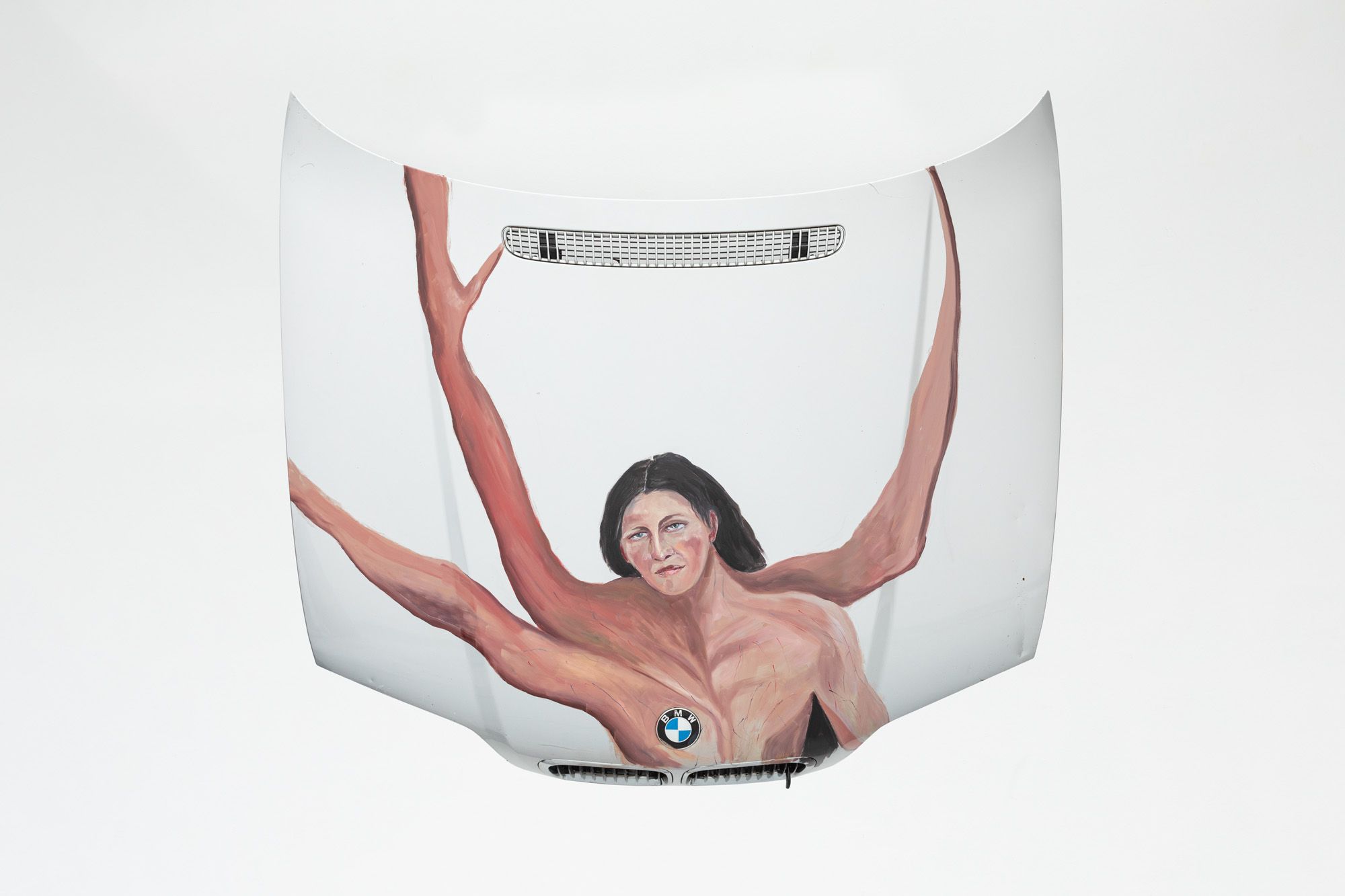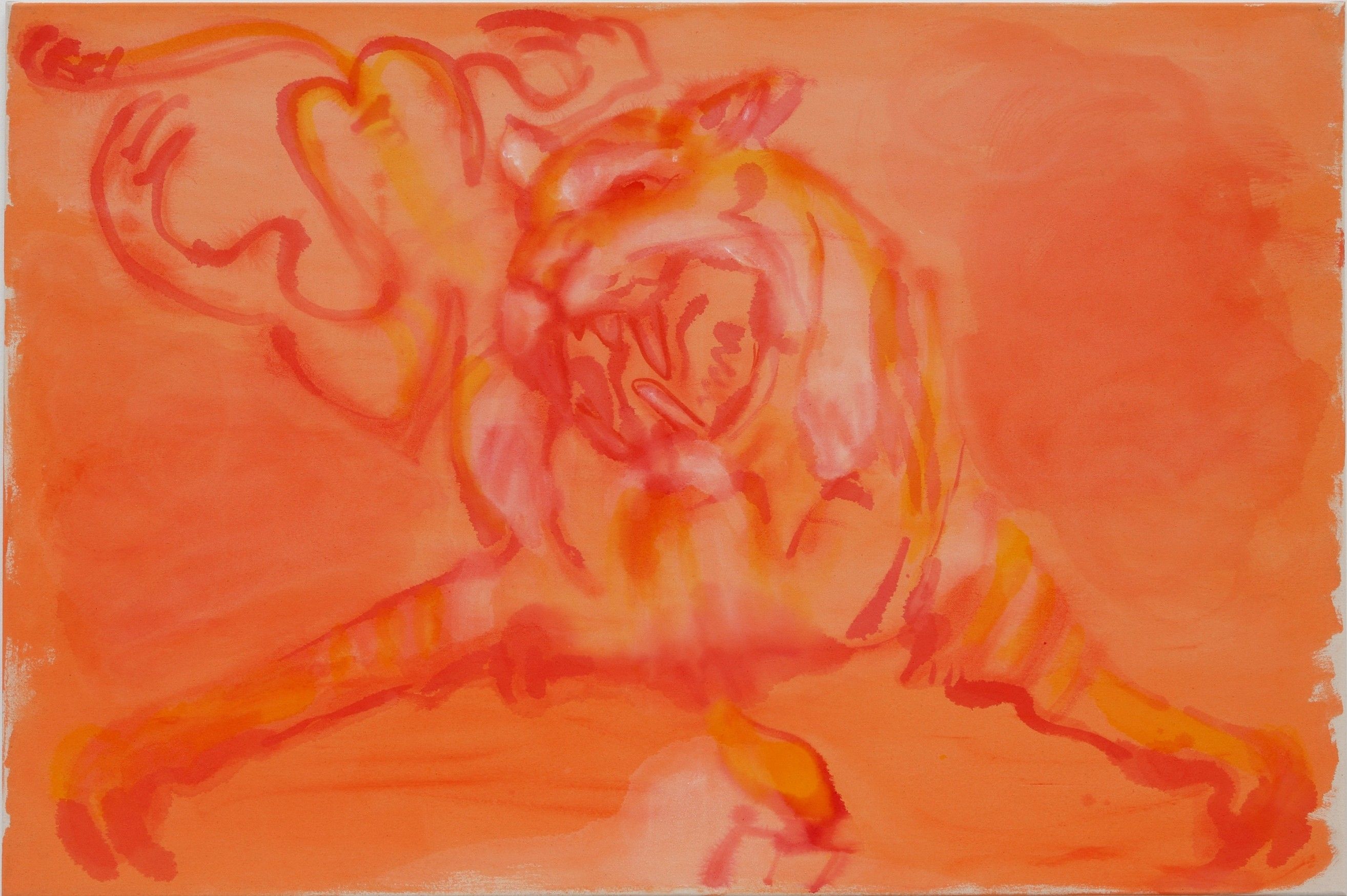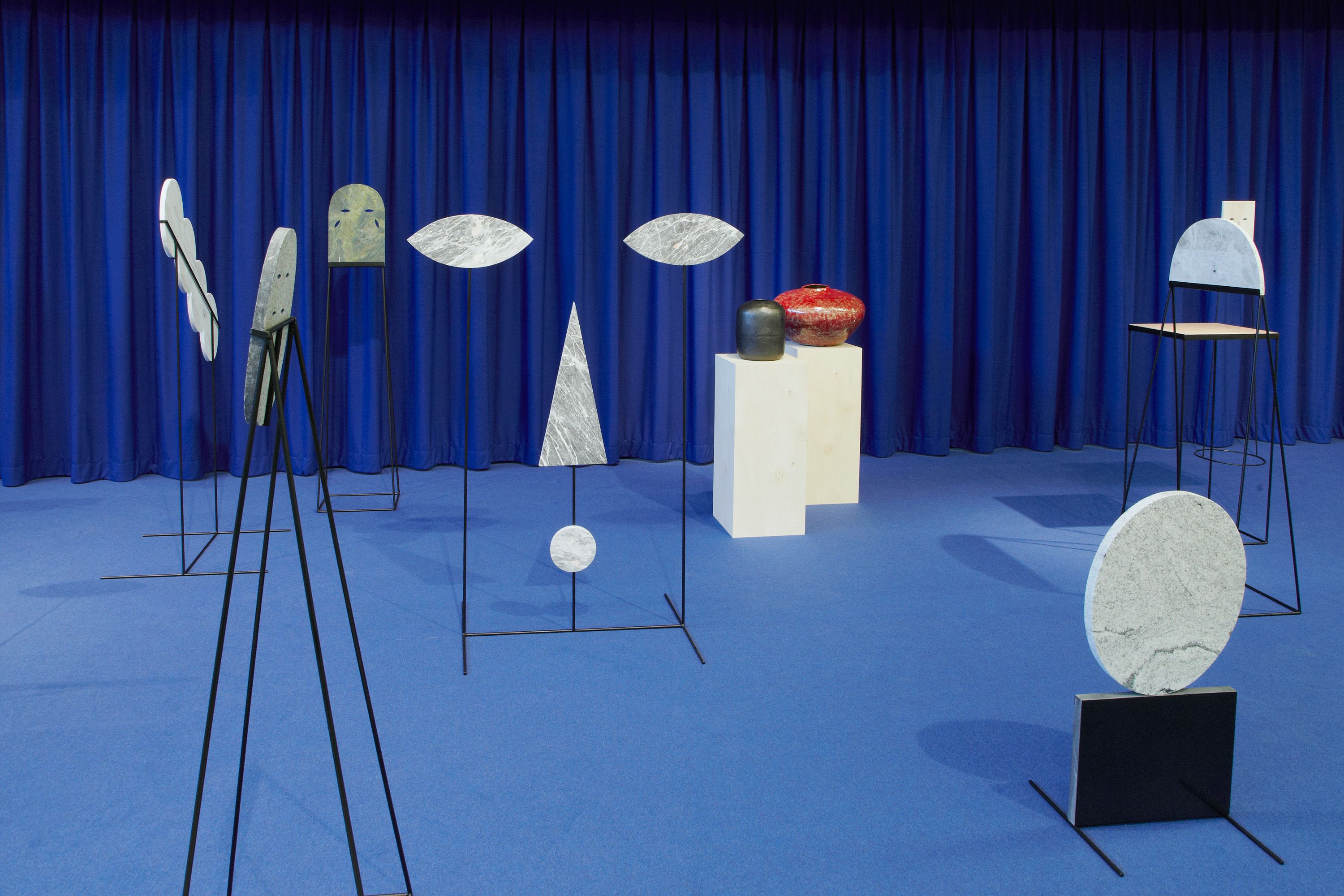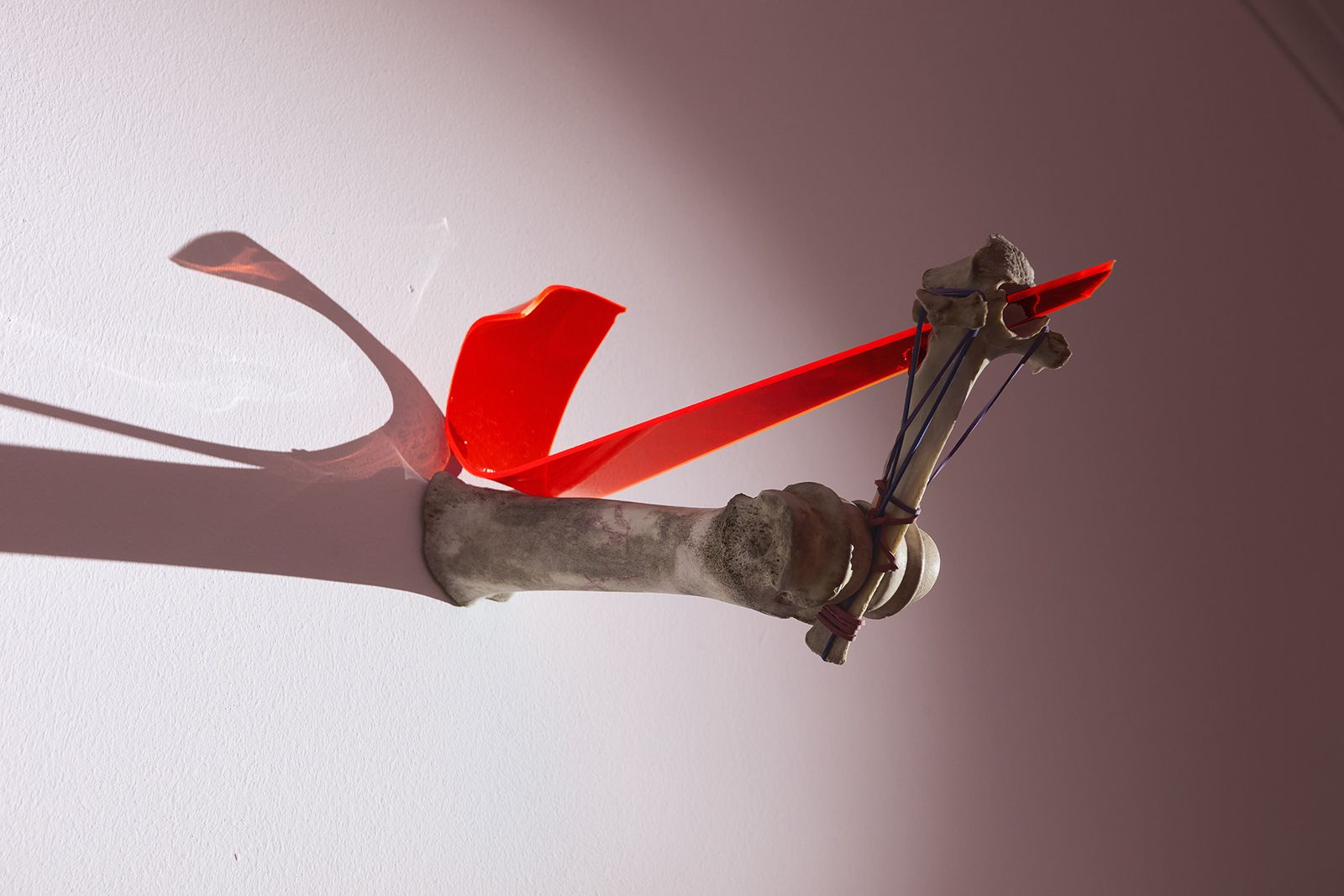The Dark Side of the Sun
| Venue: | acb Gallery |
| Date: | Jun 28 – Jul 26, 2024 |
| Opening: | Jun 27, 2024, 18:00–21:00 |
Description
The Dark Side of the Sun is a group exhibition that explores the ambiguity of our times in the artistic practice of young artists from the Central Eastern European region. The works selected revolve around the notions of knowledge and extinction, social dystopia and imagination, stability in metamorphosis, body as foreign land of the mind, reality and virtual longing, post-human science-fiction, mysticism and climate change.
With a clearly outlining degree of irony, eeriness and dark humour, the works translate into a disillusioned, bitter lecture of our hopeless, doomed times. They also express a state of apprehension regarding summertime; once considered as an easy, light and unclouded season, summer turned into a menacing period of unpredictable, extreme weather.
Exhibiting artists are Szilvia Bolla, Borsos Lőrinc, András Cséfalvay, Megan Dominescu, Sári Ember, Andrea Éva Győri, Klaudia Januško, Selma Selman, Rita Süveges and Mónika Üveges.
Szilvia Bolla explores the medium of photography, studying its potential for abstraction to find intersections between photography, installation and sculpture. Her practice often unfolds in cameraless procedures, such as the photogram or luminogram techniques, which she blends with UV printing on thermoformed plexiglas. The Neurograms featured in this show are based on the conceptual link between photosensitive paper and skin, both reacting to light. The skin’s reactions are generated by somatosensory neurons, which the artist realised first in plexiglass, then recorded on the photosensitive paper using the technique of luminogram. The blurred, sometimes barely outlining form of the neuron symbolises the disconnection between body and mind in our contemporary Western culture, and by extension, the neurotic state of depression this induces.
The artist duo Borsos Lőrinc crafts both a personal mythology and a critique of mythology itself, constructing identities that reveal their inherent emptiness. Their work explores the way art can evolve into a programmable composite entity through diverse media, methods, and motifs. This transformative quality is metaphorically represented in tableaus featuring iridescent, rainbow-like transitions. Black, once central to their art, now refracts into its constituent colours through a prism, symbolising diversity and multitude. In recent icons, they often deconstruct Christian symbols, such as the Purgatory and the mandorla, as an exploration and critique of traditional iconography and symbolism. Their textile intervention employs appropriated typography reminiscent of a cultic drone metal band and merges these typographic elements with claimed iconographic references that intertwine religious and techno-cultural meanings.
András Cséfalvay defines himself as a visual artist and digital storyteller. In his practice, he developed alternative strategies of storytelling through living or non-human entities; historical figures, objects, dinosaurs, or even an ambassador from a distant planet. His works explore the relationship of culture and technology, the political and ethical aspects of listening to non-dominant voices, and interpretations of the world. Through the motif of the flying dinosaur protecting her eggs, his work S.K.Y. Anti-Icaros (S - for Saving (Mother), K - for Knowing (Earth-Sky Crossing), Y - for Yearning (Resurrection) explores the notion of knowledge in three acts: a possibility for salvation against extinction, a life-threatening source of understanding, as well as a treasure cherished by many, but shared by only by few.
Megan Dominescu’s practice is combining trashy images and absurd textual content to point out global non-senses and misplaced priorities, as well as the worldwide spreading of harmful and toxic industrial, environmental, political, social, commercial or consumerist phenomena with sharp irony and dark humour. The playful use of hand-hooked yarn combined with vibrant, harsh colours currently constitutes the trademark of her style. Bleak outlooks on climate change, hopeless perspectives for babies about to be born, threatening extra-terrestrial forms of life, dystopic shifts in which animals walk humans on a leash, Dominescu’s imagery, despite its raw, at times childish design, translates with painful precision the disillusioned, critical mindset of a younger generation that is already bitter and loud about the wrecked, deteriorated living conditions they have to pull themselves through.
The narrative potential of objects and their constellations is at the center of Sári Ember’s artistic interest. Through these objects, not only does she question the nature of representation; she deconstructs classic genres such as portraiture and still life. Drawing on personal and collective histories, her works offer sensual, poetic interpretations of memories, traditions and rituals. The subtle, soft sense of nostalgia that emanates from her objects is also conveyed by motifs understood through time and space, such as the oval form of the face, the eyes or the egg. In the exhibition, the decorated yet blackened, empty egg and the stylised stone face multiplying eyes and mouth stand as burnt artefacts of a once flourishing, imagined form of life.
Andrea Éva Győri’s oeuvre examined the interrelation between emotional experience, creative imagination, and physicality of the body. Her researches focused on her bodily and emotional traumas, then shifted focus towards the way her body image, sexuality, illness, and psychosomatic symptoms correlate. What the body knows about itself that the conscious part of the brain does not recognize is a question the artist tried to answer by accessing her own subconscious through meditation. The early series Animals and Diamonds illustrate the dichotomy of body and mind that Western cultures experience in modern times. While the motif of the crystal with sharp edges and cold blue colour symbolises the mind, consciousness and ratio, organs, cells and inner physical processes are visualised with round forms and warm colours. Their encounter is neither impossible, nor hopeless, but the contrast between their forms and colours illustrate their lost connection.
Klaudia Januško's artworks investigate the interplay of radical female identities, contemporary video game aesthetics, and cyberfeminism. She examines and subverts the idealised female roles prevalent in today's pop culture, action movies, and mainstream video games, often shaped by the dominating male gaze. In her large-scale painting "Lady Hungaria", Januško merges a critical perspective on the idealising male gaze with the politically charged iconography of nationalism, subverting the hyper-masculinity often associated with far-right cultural extremism and creating a powerful commentary on gender and politics. This exploration extends to her light installation "Point of No Return," featuring the abbreviation PONR, linking psychology, decision theory and narratology to the eponymous Hollywood thriller and its female protagonist. In addition to these works, a collection of kitchenette knives turned into eerie props of neo-medieval cyberpunk world-building further explore the intersection of gender roles, politics, and media.
Selman Selman’s practice roots in her own experiences, daily scenes of Bosnia and the life of her family, revealing tensions surrounding topics of identity, stereotypes and expectations. The discrimination her community faces and the obstacles she encounters being a woman of Roma origins from Bosnia condensate in her art into questions of labour, value, inequality and segregation. Her works are often harsh and ironic reflections on her position in the whirlpool of global capitalism, sensitive and eerie text-based confessions or disquieting depictions of elongated female body parts. Her painting is a triple self-portrait; the scrap metal refers to the way her family has sustained itself for generations, the portrait shows Selma’s own traits, while the spidery limbs evoke the transformative power of Selma’s art that turns scrap metal into gold, stigmatised labour into a prestigious one.
Rita Süveges' series of paintings entitled Infrastructure is based on fictitious structures in space. The surface that the artist has chosen to visualise the metallic character of the austere functionalist architecture is velvet, a special material radiating softness and cosiness. Süveges' series, which won the Esterházy Art Award 2024 Audience Prize, is based on contrasts and dichotomies; the use of materials conceals an optimistic visions of the future in the delicate cloak of the past. Fictional space architecture, which has captured imagination in popular culture for at least half a century, also roots in modernist utopias. These mysteriously alien constructs therefore materialise humanity's fundamentally positive belief in progress.
Mónika Üveges’ objects stand at the intersection of natural and artificial, of aesthetically pleasing forms, disturbing contents, and warning titles. Organically shaped to evoke familiar looking yet unknown deep sea creatures, poisonous leafs, cannibal mushrooms or organs turned inside out, her hyper-objects bear an ambiguity that first manifests in her use of materials. Although her works bear a high tech extra-terrestrial character, materials that compose them are simple: painted shaped wood, synthetic resin, canvas, latex, printed textile, metal chain – sometimes augmented with yarn, carbon fibre, goat horns or chia seeds. Despite their sensual, fluid, watery and ethereal appearance, Üveges’s pieces convey a sense of eeriness and otherness that highlights our deep disconnection from nature, from our own body and the ignorance and distrust we relate to our environment with.






